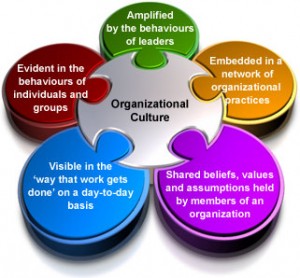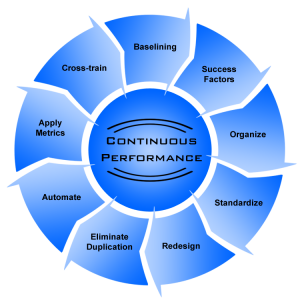 We’ve all made the decision to improve our appearance at some point in our lives. Maybe we’ve decided we were going to lose weight by dieting and exercise. Or maybe we’ve decided to gain strength by lifting weights. The first thing we did was stepped on that scale and said “Wow, I need to lose a few pounds”. Or we ran to the gym and measured our strength and endurance at various exercises.
We’ve all made the decision to improve our appearance at some point in our lives. Maybe we’ve decided we were going to lose weight by dieting and exercise. Or maybe we’ve decided to gain strength by lifting weights. The first thing we did was stepped on that scale and said “Wow, I need to lose a few pounds”. Or we ran to the gym and measured our strength and endurance at various exercises.
What we were actually doing was creating a baseline. We were creating a snapshot of our current selves. Let’s just pretend that we didn’t baseline our current self, we didn’t have our measurements, and based personal goals based on Miss America, or Mr. Universe’s appearance. We wouldn’t capitalize on the available data (our current selves) and set realistic goals. Shortly, we’d become frustrated, lose motivation, and eventually fail.
Likewise, businesses often don’t capitalize on available data to get them through difficult times. With a new year beginning and growing concerns of our economic future, now is a good time to evaluate our current environments and identify our organizational strengths, weaknesses and areas for improvements and cost savings. This article discusses the value of baselining organizational performance, different baselining approaches your organization can, and overcoming variables that add complexity to your performance baselines.
Baselining involves using historical performance data to calculate averages and standard deviations. The average establishes the baseline and the standard deviation is a percentage change in the baseline deemed acceptable. When performance exceeds the standard deviation, some specified action is usually required.
If your organization has clear, specific goals and objectives, the data to be used in the baseline is easier to determine. And of course, if goals and objectives are vague or unclear, it can be difficult to identify important baseline data. But given these tough financial times, it is probably most beneficial to focus on financial performance and key processes.
A performance baseline is performance information gathered to evaluate your current state and measure variations to gauge successes and failures within the organization. Baselines may also be used to establish goals and standards, to set SLA metrics and performance thresholds, and to make important decisions. But perhaps the most important, but overlooked reason we do performance baselines is to refocus our organizations on what’s important. You may have done a baseline a couple of years ago, but chances are you are still measuring the same things you measured back then. Performance a new baseline forces us to re-evaluate what’s important to organization as it endures the constant changes brought on by this dynamic economy.
Types of Performance Baselines
There are three types of baselines:
- rolling baselines
- recurring time-based baselines
- and specific date baselines.
Rolling baselines compare current performance metrics with a period of time preceeding the current period. An example would be comparing last month’s performance to the average performance of the previous 12 months.
Recurring time-based baselines compare current performance metrics with performance baselines calculated for the same length of periods. Daily or weekly baselines are good examples of recurring time-based baselines.
Specific date baselines compare current performance metrics with the metrics from a specific date. For example, gathering baseline sales metrics for the day after Christmas.
Complexitites of Baselining Performance
Historical baselines often answer the question “how many?” such as “how many tickets were created over a given period of time?” The historical baseline data are the averages of such counts over that specified period. Baselines can be relative to any arbitrary point in time.
While this seems simple, it gets more complex when you take into effect some of the following variables: processes that take several days to complete, business hours calculations (e.g. M-F, 9-5, excluding holidays or specific dates), calculations involving multiple time zones, and calculation involving phased implementations.
When processes extend for multiple days, counting and time calculations become considerably more difficult, especially when a reporting tool is not utilized. Processes executed on business days and during business hours are also more difficult. In this case the proper divisor at the Day level is the number of business days in the last 365 calendar days, taking into account weekends and holidays. The divisor at the Hours level is the number of business hours in the last 24 hour period. Calculations with Multiple Time Zones can span across multiple cities around the world, reflecting different holidays and work norms. The baseline divisor thus becomes a function not only of Time but also of Location, thus further complicating the process. Projects utilizing phased implementations where new locations or divisions go “live” as the enterprise expands (such as in a phased Enterprise Resource Planning implementation). In this case, the baseline calculation must take into account how long a particular location has been live in order to obtain an accurate baseline.
Understanding Variables and Standard Deviations
Variance and Standard Deviation are measures of how spread out a distribution is. In other words, they are measures of variability. The spread is the degree to which scores on the variable differ from each other. If every score on the variable were about equal, the variable would have very little spread. Standard Deviation is the square root of the variance. It is the most commonly used measure of spread. An important attribute of the standard deviation as a measure of spread is that if the mean and standard deviation of a normal distribution are known, it is possible to compute the percentile rank associated with any given score. In a normal distribution, about 68% of the scores are within one standard deviation of the mean and about 95% of the scores are within two standard deviations of the mean.
Identifying the Right Data to Baseline
There’s a basic rule to identifying the right data to baseline:
1) measure what your customers say is important,
2) measure areas where there are problems you’d like to solve, and
3) measure the business objectives you are aiming to achieve.
If your organization has clear, specific goals and objectives, the data to be used in the baseline is easier to determine. However, if goals and objectives are vague or unclear, it is difficult to identify important baseline data. Measurements should be aligned to your organization’s objectives and should be SMART (Specific, Measurable, Actionable, Relevant, and Timely).
——————————————–
Victor Holman is a Business Performance Expert and CEO of Lifecycle Performance Professionals. His Business Done For You Service helps small business owners level the playing field with larger, higher budget competitors by delivering high performance marketing, management and social media solutions that build credibility and expert status, and generate steady leads and increased profits.
Get FREE ACCESS to his highly acclaimed Insider’s Secrets Club, which provides the latest business growth tools and strategies to explode your income.
Get a FREE Performance Management Kit at http://www.lifecycle-performance-pros.com/Free-Stuff/free-kit.html
Visit Victor at www.lifecycle-performance-pros.com or www.victorholman.com today
How to Evaluate Organizational Performance in Economic Hard Times








